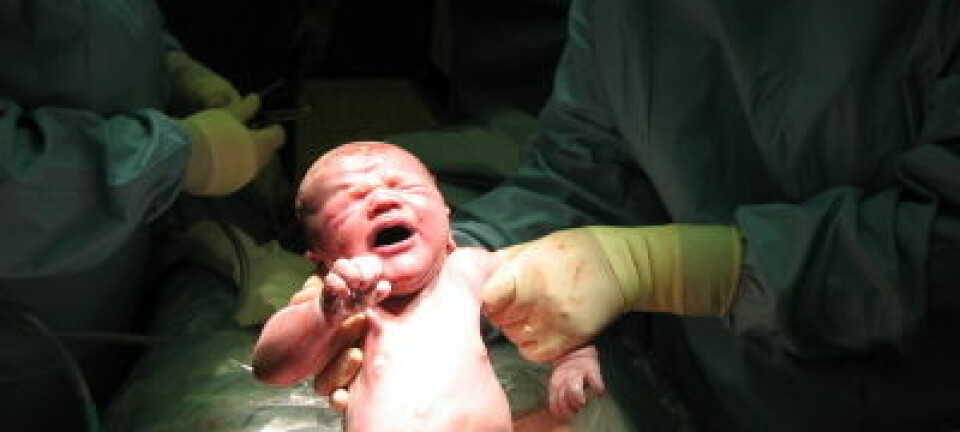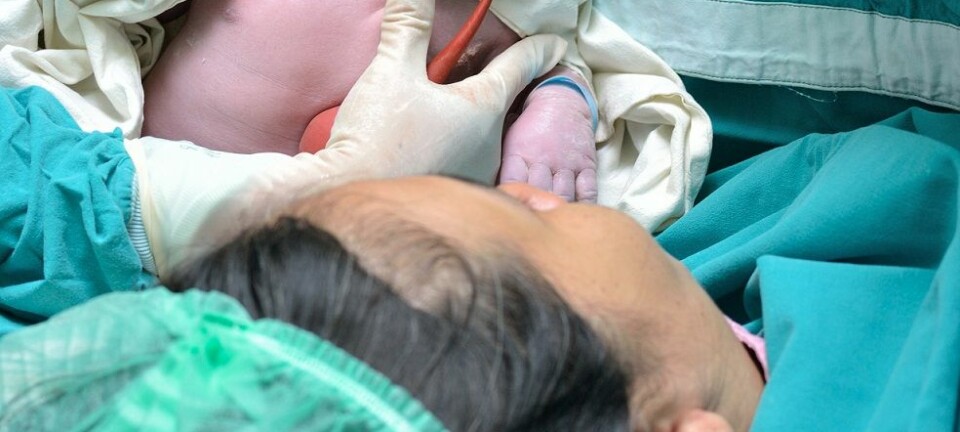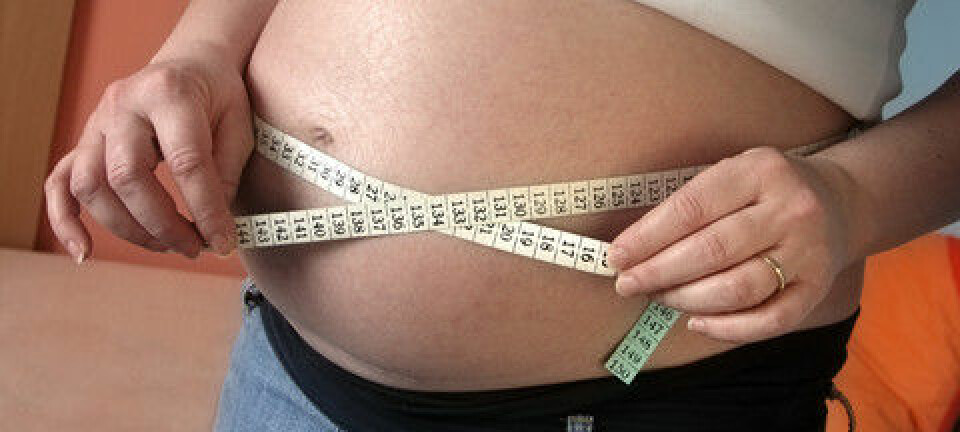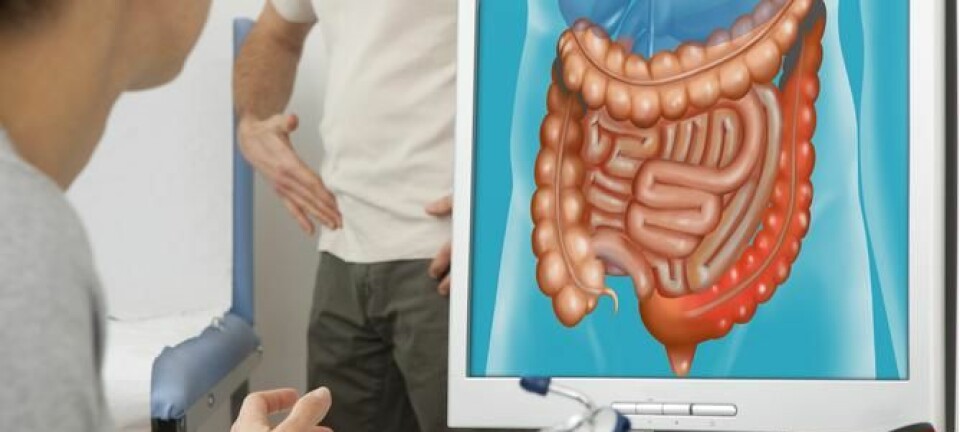
Mouse study: C-sections cause immune system malfunction
Experiments on mice indicate that natural delivery gives children a better and healthier immune system.
In a new study, Danish scientists have shown that mice born naturally have more intestinal bacteria and a better and more balanced immune system compared to mice born by C-section.
“This is a very important study,” says Professor Karsten Buschard of the Bartholin Institute at Rigshospitalet, the State University Hospital in Copenhagen.
Buschard is one of the scientists behind the new study, which was recently published in the Journal of Immunology.
Along with other studies, this contributes to the emerging picture that it is good for a baby to be born vaginally, he says. “Most women have no choice, but it should be mentioned in the guidance to pregnant women who are free to choose whether they want a C-section delivery or not.”
Caesarean birth increases risk of certain illnesses
In recent years, a number of Danish and international studies have shown that children who were born by C-section are more prone to type 1 diabetes, hay fever, and asthma compared to children who were delivered in the old-fashioned way.
It has not yet been determined precisely why this is the case but several scientists believe that the explanation is connected to the bacteria the child receives from the mother during vaginal delivery.
“During a normal vaginal birth the baby is exposed to all sorts of things from the mother, whereas a C-section delivery is far more sterile. But it seems that it’s good for children to get bacteria from their mother and start colonising their intestines with bacteria as quickly as possible,” says Buschard.
Bacteria educate the immune system
Buschard explains how the theory is that the bacteria influence the child’s immune system, simply put helping it learn to distinguish between the body’s own bacteria and harmful foreign molecules.
“Type 1 diabetes is one example of an illness that is characterised by a failure on the part of the immune system to recognise the body’s own cells, causing it to attack the cells that produce insulin, i.e. attacking the body,” says Buschard.
In 2008, he took part in a study that showed that C-section babies have a 23 per cent higher risk of developing diabetes than babies born naturally.
Female mice gave birth by C-section
In the new study, the scientists designed an experiment where a number of mice were made to give birth either naturally or by C-section.
Afterwards, the scientists kept track of the offspring, carrying out a number of tests. These showed that the naturally born mice had more bacteria in their intestines than the mice born by C-section.
“We observed that the young mice had different bacterial flora in their intestines, varying according to whether they had been born by C-section or natural delivery,” says Professor Axel Kornerup Hansen of the Department of Veterinary Disease Biology at the University of Copenhagen, who also took part in the new study. “But the most interesting part was that later on we couldn’t detect any difference.”
C-section mice had ‘poorer’ immune systems
While the difference between the intestinal bacterial floras of the mice seemed to disappear with age, there continued to be a difference between the immune systems of the two groups of mice throughout their adult lives.
“We could see that the mice born naturally had more of a certain type of immune system cell called regulatory T-cells. These help remember all the things the immune system needs to be able to handle. For instance, it’s no good if the immune system starts to attack the food we eat, so these cells help ensure that the immune system doesn’t send in the heavy artillery to fight everything in the body,” says Hansen.
He adds that there was a “significant difference” in the number of regulatory T-cells found in the two groups of mice.
“It seems that one significant finding from our study is that the first encounter with bacteria needs to happen early in life in order to teach the immune system to distinguish between the things it encounters in the body,” he says.
“There is of course a difference between mice and men in this connection, as the young mice have better opportunity to get bacteria from the mother during birth. Unlike little babies, the young mice live in the litter in which their mother eats and defecates, so they are exposed to all these bacteria from the mother to which little babies wouldn’t naturally be exposed. So it would seem that it is very important that exposure to these bacteria happens as early as possible,” says Hansen.
Does it apply to people, too?
Hansen points out that even though studies carried out on mice cannot be directly translated to humans, there is “a good chance” that the results can be recreated.
“If we’re talking about specific diseases, mice are often not very good models, and results from mouse experiments seem to be hard to apply to people. But when operating on the level of mechanics as we are here, where it’s just a question of measuring this or that type of cell, the results are generally much more applicable to humans,” says Hansen.
Professor: treat the results with caution
At the Danish State Serum Institute (SSI), Peter Bager has conducted research for years on children born by C-section and their risk of developing various diseases.
He describes the new study as “interesting” but stresses the necessity of taking a critical approach to both the results and the so-called ‘hygiene hypothesis’ -- the general hypothesis that exposure to bacteria ‘educates’ children’s immune systems.
“The whole discussion about C-section babies and the development of illnesses later in life is to a great extent marked by the hygiene hypothesis, and the fact that these children are born with intestinal bacterial flora different from those of other children. It’s interesting because the theory is easily understood and makes sense intuitively -- to use a popular image, it takes a certain amount of dirt to educate an immune system,” says Bager.
“And it’s of course very interesting to look for differences in the intestinal bacterial flora according to mode of delivery. But the question is whether it holds any significance for the later development of disease,” he says.
Genetics could play a role
Bager has conducted a meta-study based on 26 international studies which shows that children born by C-section delivery are 20-30 percent more likely to develop asthma and hay fever than children born naturally.
However, he stresses that the causal connection is not known -- i.e. why C-section babies appear to have a higher risk of developing certain diseases.
“There could be a number of reasons why women have C-sections, and we can’t say whether these reasons play a role in the children’s risk of developing these illnesses. One of the many contributing reasons why women have C-sections is that they are obese or asthmatic. So the group of women who have C-sections is select, and perhaps there could be an underlying genetic reason why their children are more prone to certain illnesses,” says Bager.
In his opinion, there is still insufficient evidence that women who give birth by C-section should worry that their children may have a higher risk of developing type 1 diabetes, hay fever or asthma.
To have or not to have a C-section delivery
Buschard points out that the vast majority of women who give birth by C-section do so for technical reasons such as the baby not being correctly positioned.
Nevertheless, he does agree that one should not disregard the fact that other factors could play a part in C-section babies’ risk of developing certain illnesses.
Yet, Bager still thinks that, given the number of studies pointing to the significance of the C-section procedure itself and the lack of exposure to bacteria, it is “very likely” that these factors hold the key to the mystery.
“Overall, there are lots of good arguments why giving birth naturally is the healthiest option. But there are of course many women who have no choice,” says Buschard.
Translated by: Iben Gøtzsche Thiele








